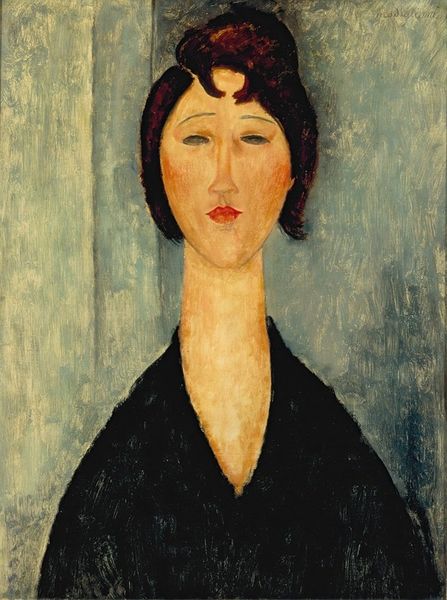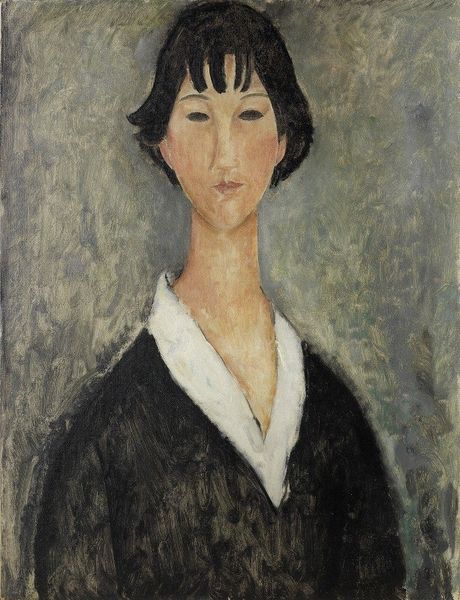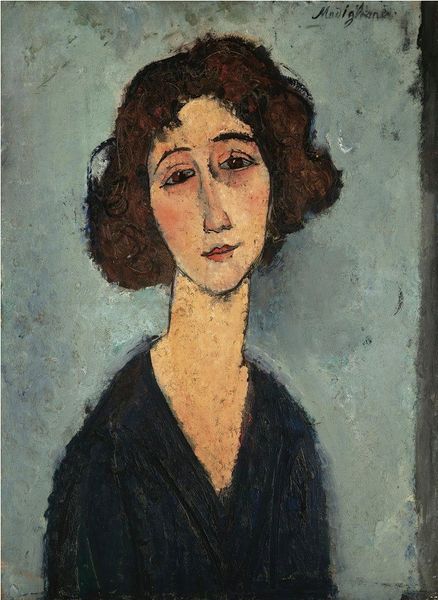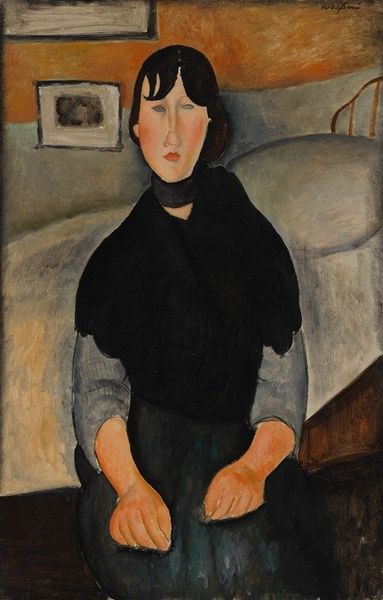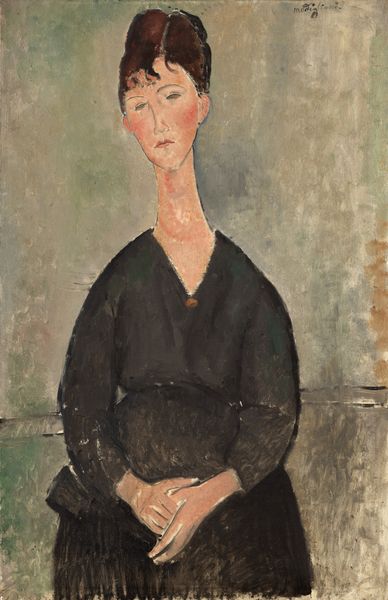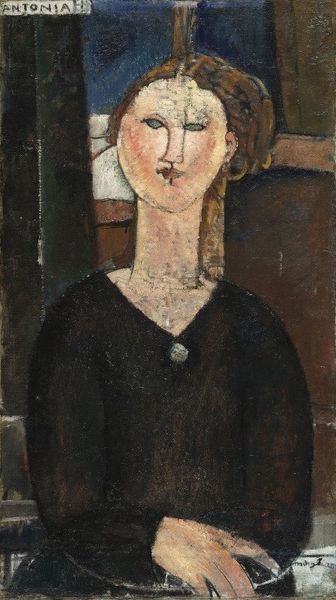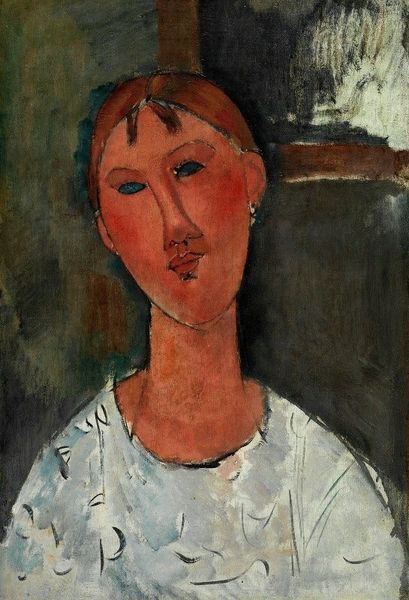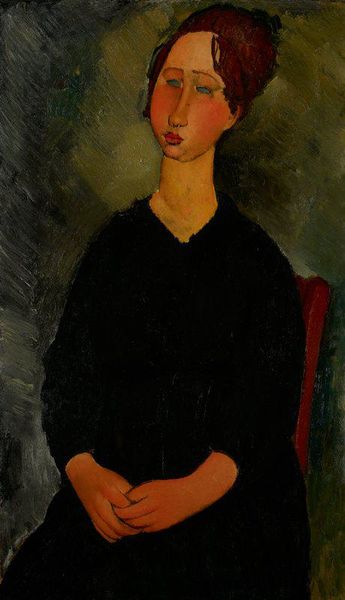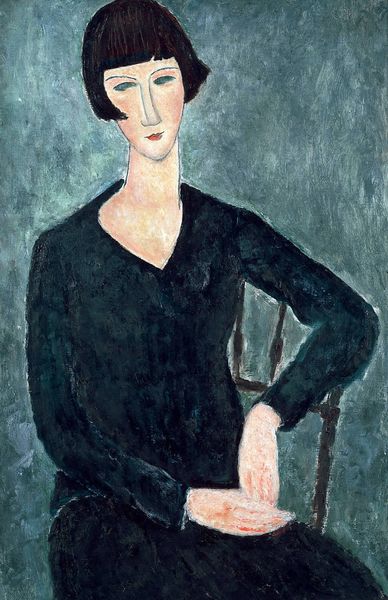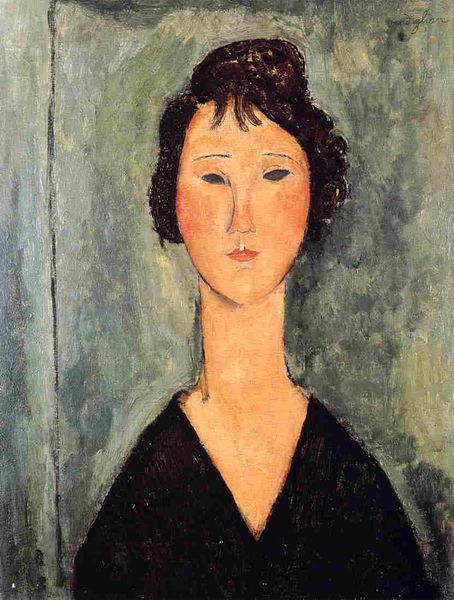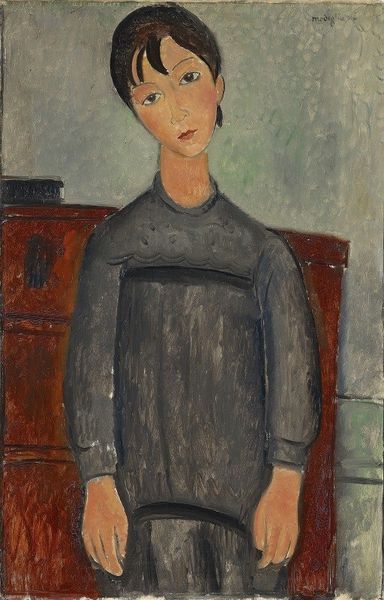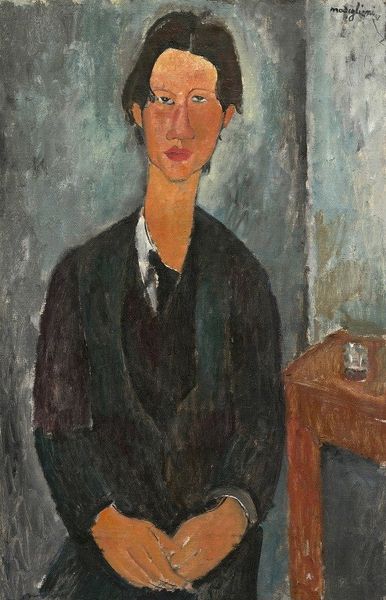
painting, oil-paint
#
portrait
#
figurative
#
painting
#
oil-paint
#
figuration
#
oil painting
#
expressionism
#
portrait drawing
#
italian-renaissance
#
portrait art
#
watercolor
Copyright: Public Domain: Artvee
Curator: Here we have Amedeo Modigliani’s oil on canvas, "A Woman", which he painted sometime between 1917 and 1920. Editor: The elongated features immediately give this painting an elegant, yet slightly melancholic air. The simplicity of the shapes and colors—mostly blues and browns—add to this understated feeling. Curator: Yes, the emphasis on line and simplified forms is quite striking. Observe how Modigliani distorts the proportions; the elongated neck, the flattened nose. It's a clear departure from purely representational art. We might look to semiotics to unpack the implications of these distortions. Editor: Absolutely, but what about the actual application of paint? You can see the brushstrokes, the almost hurried application that lends itself to Modigliani's overall practice of swift production. Remember that Modigliani had tuberculosis; that very material fact certainly influenced his lifestyle and artmaking. Curator: True. One cannot ignore the hand of the artist. Yet consider how the closed eyes function. Their absence creates a sense of mystery. We cannot fully access her thoughts or emotions. There is a level of structural ambiguity in the piece, almost a puzzle, in how the planes come together and form a complete image. Editor: Speaking of structure, have we considered the economic structure that allows the painting to be consumed and exhibited? Or even, Modigliani's role as an artisan within a social hierarchy that valued painters, even struggling ones, over other laborers. Curator: You introduce a complex point about hierarchies of labour. I would respond by mentioning the painting’s historical legacy: influencing other artists while remaining an important statement in Modernist portraiture due to its elegance, purity of form, and striking composition. Editor: Fair enough. And with this in mind, I am reminded to think about art's relationship to daily life and human expression. This woman rendered on canvas tells tales beyond the canvas itself. Curator: An interesting proposition to end on, leaving the listener, I think, with several intriguing thoughts.
Comments
No comments
Be the first to comment and join the conversation on the ultimate creative platform.

